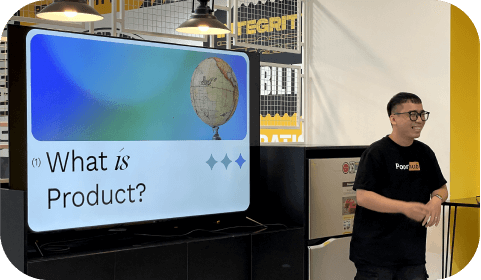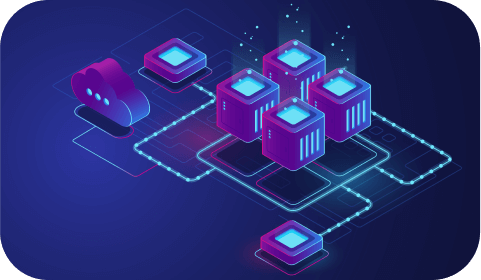Agile vs Traditional Project Management: Key Points in 2025

Agile vs Traditional Project Management represents two fundamentally different approaches to running projects. In 2025, this comparison matters more than ever. Organizations today face rapid market changes, technological disruption, and distributed teams. Agile methods have become widespread – about 63% of companies report using Agile practices to boost adaptability and speed. Yet many projects still follow a traditional, plan-driven path, especially in industries where change is costly or risky. For example, 76% of construction firms continue to rely on traditional Waterfall management approaches. This means both Agile and Traditional methods remain relevant. Understanding their differences and uses is crucial for project success in 2025. Companies that choose the right approach (or blend of approaches) for their context can deliver results faster and more reliably. In the sections below, we’ll define Agile and Traditional project management, compare their key differences, and explain when each method (or a hybrid) works best.
What is Agile Project Management?
Agile project management is an approach that focuses on flexibility, iterative work cycles, and rapid delivery of value. Instead of one big plan, Agile teams break projects into small units (often called sprints or iterations) and continuously adapt. They collaborate closely with customers or stakeholders and welcome changes even late in the project. In simple terms, Agile is about learning and adjusting as you go. It emphasizes people and interactions over processes, delivering working results frequently, and responding to change over following a fixed plan. According to one concise definition, Agile is “a flexible, iterative approach to project management that emphasizes collaboration, customer feedback, and small, incremental changes”.
Core principles of Agile include:
- Iterative development: Work is done in repeated cycles with each iteration producing a usable increment.
- Customer collaboration: Frequent check-ins with clients or end-users to ensure the product meets their needs.
- Embracing change: Requirements are expected to evolve. Teams remain flexible and adjust plans readily.
- Continuous improvement: After each cycle, the team reflects on what to improve for the next iteration.
The Growth of Agile Project Management
Agile project management was born in software development, but by 2025 it extends far beyond IT. Many industries use Agile methods. In financial services, for instance, over 58% of companies report using Agile regularly. This sector adopted Agile to handle fast-changing fintech innovations and regulatory updates. Marketing teams are also embracing Agile – 86% of marketers plan to shift some or all of their marketing teams to Agile ways of working. Even product development and research groups have adopted Agile practices to drive innovation.

Overall, Agile adoption has grown steadily. As of 2023, roughly 24.6% of companies say they use Agile as their primary project management practice (up from 23% in 2020). The appeal of Agile lies in its results: teams often achieve better alignment with business needs and higher customer satisfaction. In one survey, 59% of Agile practitioners reported improved collaboration and 57% saw better alignment with organizational objectives after going Agile. Agile project management enables faster delivery of partial solutions, early feedback, and the ability to course-correct before it’s too late. This makes it well-suited for projects where speed and adaptability are priorities or where the final requirements are not fully known upfront.
What is Traditional Project Management?
Traditional project management refers to a more structured, sequential approach to projects. It’s often called the Waterfall model or a predictive methodology. In this approach, the project is planned extensively at the beginning, and then it flows through set phases that happen one after another. Each phase (for example: requirements gathering, design, development, testing, and deployment) must be completed before the next phase begins. The plan, scope, and requirements are defined early and are expected to remain stable. This method is best suited for projects with well-defined requirements and predictable outcomes. Once the plan is approved, the team follows it diligently with relatively little deviation.
A traditional project typically goes through five process groups: Initiation, Planning, Execution, Monitoring & Control, and Closing. All tasks, timelines, and resources are mapped out in detail during the planning stage. Progress is then monitored against this plan. Changes are managed through formal change control procedures (which can be slow and require approvals). Because of this, Traditional project management values upfront certainty – knowing exactly what the project will deliver, how long it will take, and what it will cost from the start.
The Growth of Traditional Project Management
Traditional methods remain very common in certain industries and types of projects, even in 2025. Many engineering, construction, and manufacturing projects use this approach because in those domains, requirements often need to be fixed and changes can be expensive or dangerous. For example, building a bridge or a house has a sequence of steps that must be followed precisely; you can’t pour the foundation after you’ve built the walls. It’s no surprise that construction companies lean heavily on predictive project management (76% use it regularly).

Traditional methods are also favored in government and defense projects, or any venture with strict compliance and safety regulations. These projects benefit from the detailed documentation and rigorous risk management that the Traditional approach provides. In fact, a traditional methodology (often based on bodies of knowledge like PMI’s PMBOK or PRINCE2) is sometimes mandated for government projects. PRINCE2, for instance, is a structured project management method commonly used in government and large organizations.
Overall, Traditional project management is valued for its control and predictability. By having a clear plan and scope, stakeholders know exactly what to expect. As of 2023, approximately 43.9% of organizations still rely primarily on these predictive, waterfall-style approaches (though this share has declined from 58% in 2020). Traditional project management works best when requirements are unlikely to change, when each part of the project depends on the previous one, and when delivering the entire result in one go is necessary for it to be useful.
Agile vs Traditional Project Management: Key Differences
Agile and Traditional project management differ in how they handle planning, change, and stakeholder engagement. Below are some key points of comparison highlighting their differences:
Flexibility and Adaptability
Agile is highly flexible. Teams embrace change throughout the project and can adjust scope or priorities even late in development. Plans are updated frequently as new information comes in. Traditional management is much more rigid – changes to scope are discouraged once the project is underway. Any change must go through formal review and approval (a change control process), since the initial plan is considered the single source of truth. In short, Agile thrives on adapting to change, whereas Traditional tries to avoid change by sticking to the original plan. This flexibility gap means Agile can handle evolving requirements with ease, while Traditional methods might struggle or incur delays when changes arise.
Speed of Delivery and Iteration
Agile delivers value in small, frequent increments. An Agile team produces working pieces of the product in short cycles (often every 1-4 weeks). Stakeholders start seeing results early on and regularly. This iterative delivery means if something isn’t right, it can be corrected in the next sprint rather than at the end. Traditional projects, on the other hand, typically deliver the final product only at the end of the project lifecycle. Little (if any) tangible output is seen until all phases are complete. The entire project might take months or years before stakeholders get the full deliverable. This means Agile can get usable features to market faster, while Traditional may have a longer wait before any value is realized.
However, Traditional approaches can sometimes hit target dates more predictably for that single big delivery because everything was scheduled upfront. The trade-off is that Agile’s incremental approach often leads to faster feedback and the ability to course-correct, potentially avoiding large rework at the end.
Stakeholder Involvement and Feedback
In Agile project management, stakeholders (such as customers, end users, or business sponsors) are involved continuously. Agile teams demo work frequently (for example, at the end of each sprint) and gather feedback. This continuous feedback loop ensures the project is aligning with stakeholder expectations and can boost customer satisfaction. Issues or changes requested by stakeholders can be addressed in the next iteration, keeping the stakeholders engaged and happy with progress.
In Traditional project management, stakeholder involvement is more limited. Stakeholders are typically heavily involved at the beginning (to provide requirements and approve plans) and at the end (to review the final deliverable). During the long execution phase, communication is often via periodic status reports rather than interactive feedback sessions. There is less opportunity for stakeholders to give input once development is in motion. This means Traditional projects run a higher risk of delivering something that might not fully meet stakeholder needs (since the next time the customer sees the product could be near project completion). Agile’s frequent check-ins mitigate that risk by incorporating stakeholder input throughout.
Handling Change and Risk Management
Agile methods are built to handle change gracefully. When requirements change or unexpected challenges arise, Agile teams re-prioritize and adjust in the next sprint. This iterative approach also catches risks or failures early – for instance, if a certain feature approach isn’t working, the team learns that within weeks and can pivot, limiting wasted effort. Traditional methods treat changes as exceptions. A change late in the project (like a new requirement or a design alteration) can be very disruptive and expensive under a Waterfall plan. Changes might require revising documentation, reworking earlier completed phases, or even project scope renegotiation. As a result, Traditional projects place a lot of emphasis on risk identification upfront – trying to foresee and plan for all risks in advance – and on strict change control to prevent scope creep.
Despite these precautions, traditional projects can face significant issues if initial assumptions were wrong or new needs emerge. Studies have shown the impact of this difference: Only about 14% of Waterfall (traditional) projects are completed successfully without encountering major challenges, compared to 42% of Agile projects. In other words, Agile’s adaptability leads to a higher chance of project success with fewer serious problems. Similarly, the failure rate for Agile projects is reported around just 9%, whereas it’s about 29% for Waterfall projects. This gap highlights how handling change poorly can derail projects – a risk that Agile minimizes by design. Traditional approaches, if the plan is accurate and no big changes occur, can perform very well; but if things do not go exactly as planned, they are less forgiving than Agile. Agile continuously addresses risks and changes in real-time, whereas Traditional front-loads plan to avoid changes later.
When to Choose Agile or Traditional?

Choosing Agile vs Traditional Project Management depends on the project’s characteristics and goals. Each method has scenarios where it is most effective. Here are some guidelines on when to use each:
Traditional (Waterfall)
Traditional (Waterfall) is best when:
- Requirements are clear and fixed from the start. If you know exactly what needs to be delivered and the requirements are unlikely to change, a traditional approach is ideal. For example, if a team is building a house based on a finalized architectural plan, the Waterfall method fits well. The end product is clearly defined, so a sequential plan can be followed with confidence.
- Phases are dependent and must happen in order. If certain tasks can only start after previous tasks are 100% done, a linear model is logical. For example, in manufacturing a new hardware product, you might need a finalized design before you can begin production. When each phase (design → prototype → testing → production) has strict dependencies, the project naturally aligns with a Traditional sequential process.
- Projects with heavy regulation or safety concerns. Industries like healthcare, construction, aerospace, or finance (for core banking systems) often favor Traditional project management due to compliance requirements. If a project must follow specific regulatory steps or standards, it’s usually safer to plan everything upfront and stick to that plan.
- Strict budget or timeline with little flexibility. When a project has a fixed budget or hard deadline and scope must be locked to meet it, Traditional planning is often used. By defining scope precisely and controlling changes, the project manager can better ensure the project stays within the agreed budget and schedule. Agile’s evolving scope might be seen as too risky if there is zero tolerance for deviation on time or cost.
Agile
- Requirements are uncertain or likely to evolve. Projects at the innovation or R&D stage often have moving targets. If you’re developing a new software application or a product in a nascent market, you might not know all the features users will want at the outset. Agile shines here – it’s designed to accommodate discovery. Teams can start with initial requirements and then adjust as they learn more.
- Speed and time-to-market are critical. In fast-paced industries (like technology or consumer electronics), being able to deliver updates or new features quickly is a competitive advantage. Agile’s iterative sprints enable rapid releases. If your project environment changes monthly or competitors are releasing updates frequently, Agile helps you keep up.
- Stakeholder or customer feedback is critical throughout the project. Choose Agile when you want constant feedback to steer the project. If the end-users’ input is needed frequently to refine the product (common in design projects, app development, or any user-centric innovation), Agile is very effective. It enables a project approach similar to a chef tasting a dish as they cook – adjusting seasoning as needed.
- Projects that can be broken into smaller deliverables. Agile works best when you can divide the work into chunks that deliver standalone value. If parts of the product can be delivered and used independently, you can release them iteratively. Software is a classic example: you can deploy some features of an application while others are still in development. Likewise, in a marketing campaign, you might roll out one channel or experiment at a time and learn from it. If your project can be modular, Agile allows those modules to be completed in order of value.
Designveloper’s Project Management Methodology

Our approach to project management at Designveloper has been shaped so it can be as efficient, adaptable as well as satisfying to customers as possible. As a leading web and software development company in Vietnam, we have successfully delivered over 100 projects since our inception in 2013. Our methodology integrates the best practices of Agile and Traditional project management to cater to diverse project requirements.
Agile Practices at Designveloper
We follow Agile principles and love utilizing them to be as flexible and responsive as possible. Our teams work in iterative cycles, so we receive continuous feedback and adapt to iterate. This approach has been instrumental in projects like Lumin PDF, where rapid development and regular updates were crucial to meet user demands.
Structured Approach for Complex Projects
For projects with well-defined scopes and stringent requirements, we incorporate Traditional project management elements. This allows predictability and control in all project phases as all project phases are well planned and executed. This methodology is evident in our work with ODC, a health care platform for which compliance and precision were critical.
Hybrid Methodology for Optimal Results
Each project is different, and we usually take a hybrid approach and combine the flexibility of Agile, with the rigidity of the Traditional structure. This way of addressing the challenges associated with a specific project is tailored. As an example, while designing our crypto wallet application called Bonux, we integrated Agile’s flexibility of dealing with the evolving crypto world by closely working with Traditional practices to guarantee security and reliability.
Commitment to Continuous Improvement
Our project management practices are underpinned by a commitment to continuous improvement. We regularly review our processes, incorporating lessons learned to enhance future project outcomes. This dedication ensures that we remain at the forefront of delivering high-quality software solutions.
Designveloper combines Agile and Traditional project management methodologies to ensure we can change with the ever changing requirements of the industry while maintaining the same very high level of quality and client experience.
Conclusion
Both Agile and Traditional project management have important roles to play in 2025. They offer different strengths: Agile provides flexibility, rapid iteration, and continuous stakeholder engagement, while Traditional offers thorough planning, clear structure, and risk control. The key is not declaring one method the winner, but rather understanding which approach (or mix of approaches) fits a given project or organization. When considering Agile vs Traditional Project Management, evaluate the nature of your project. If requirements are fixed and the path is well-trodden, a Traditional approach might lead to a smoother delivery. If uncertainty is high and speed matters, Agile methods could yield better results. Often, the optimal solution is a hybrid, blending Agile adaptability with Traditional planning. As we’ve seen, many teams are already taking this combined route to maximize success.
Ultimately, effective project management in 2025 means being versatile. By knowing the key points of Agile and Traditional approaches, project leaders can make informed decisions or adjustments mid-project. The goal is to deliver projects on time, on budget, and to scope – and whether one uses Agile, Traditional, or a Hybrid model, those outcomes are achievable with the right method applied to the right situation. In summary, Agile vs Traditional Project Management is not a binary choice but a spectrum. Understanding the differences and knowing when to use each empowers organizations to navigate projects of all types. By choosing the approach that aligns with your project’s needs (and even mixing methods when appropriate), you set up your team for success in the dynamic project landscape of 2025.

















































